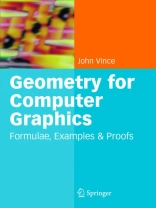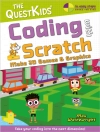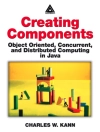Geometry is the cornerstone of computer graphics and computer animation, and provides the framework and tools for solving problems in two and three dimensions. This may be in the form of describing simple shapes such as a circle, ellipse, or parabola, or complex problems such as rotating 3D objects about an arbitrary axis.
Geometry for Computer Graphics draws together a wide variety of geometric information that will provide a sourcebook of facts, examples, and proofs for students, academics, researchers, and professional practitioners.
The book is divided into 4 sections: the first summarizes hundreds of formulae used to solve 2D and 3D geometric problems. The second section places these formulae in context in the form of worked examples. The third provides the origin and proofs of these formulae, and communicates mathematical strategies for solving geometric problems. The last section is a glossary of terms used in geometry.
İçerik tablosu
From the contents:
Geometry.- Lines, angles and trigonometry.- Circe.- Triangle.- Quadrilaterals.- Polygon.- Three-dimensional objects.- Coordinate systems.- Vectors.- Quaternions.- Transformations.- 2D Straight line.- Lines and circles.- Second degree curves.- 3D Straight line.- The plane.- Line, plane and sphere.- 3D Triangle.- Parametric curves and patches.- Second-degree surfaces in standard form.- Examples.- Trigonometry.- Circe.- Triangle.- Quadrilateral.- Polygon.- Three-dimensional objects.- Coordinate systems.- Vectors.- Quaternions.- Transformations.- 2D Straight line.- Lines and a circle.- Second degree curves.- 3D Straight line.- The plane.- Line, plane and sphere.- 3D Triangle.- Parametric curves and patches.- Second-degree surfaces in standard form.- Proofs.- Glossary.












